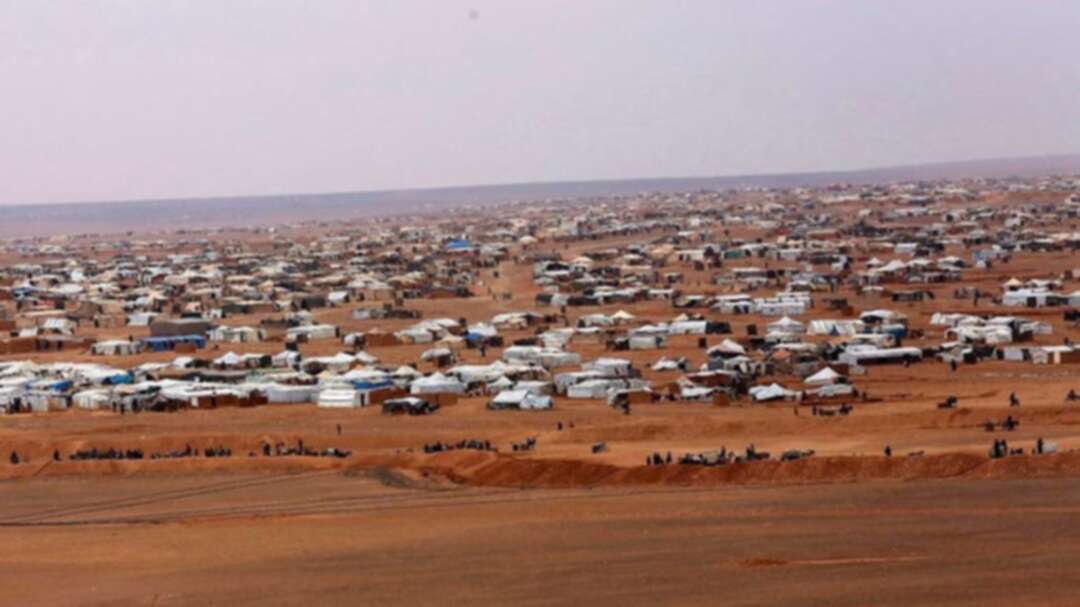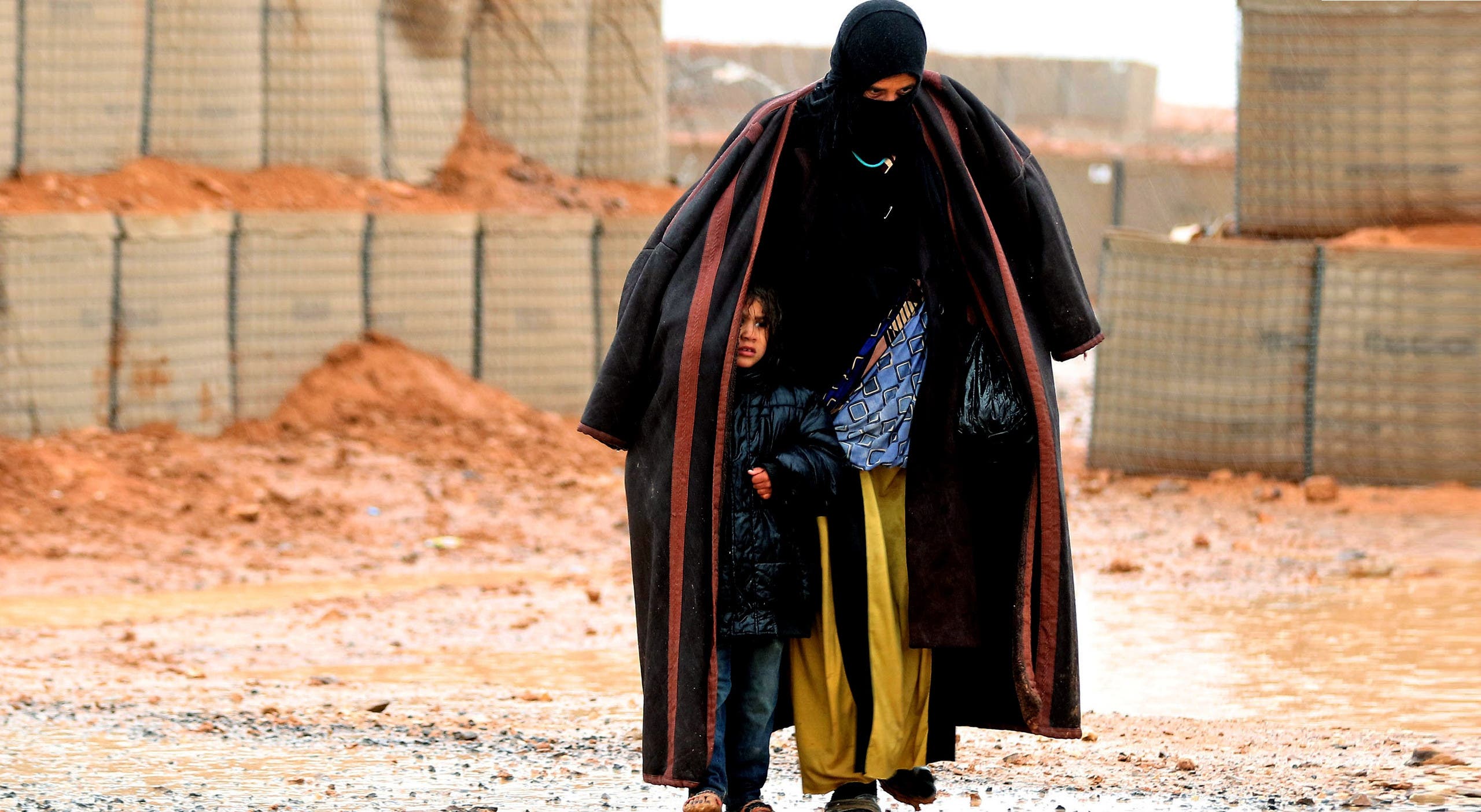-
Syria’s Rukban camp dwindles after five-month Russian siege: Aid workers

The population of Rukban camp in a US-protected desert zone in southeast Syria has dwindled to a quarter of the more than 40,000 who lived there five months ago due to Russian moves to block supplies, Syrian aid workers, diplomats and residents say.
The fate of the camp and its residents, living near a Pentagon-run base close to the Jordanian and Iraqi borders, highlights the tussle for influence in the region between Russia and the United States.
It also exposes the same strategy of years of bitter siege imposed on former opposition bastions by Moscow and Syrian President Bashar al Assad’s forces to push rebels to capitulate.
The camp's inhabitants, most of whom fled from Russian airstrikes when Moscow pounded towns in eastern Homs desert several years ago, say growing hunger and poverty as a result of the blocking of food supplies had forced most to leave.
“The situation is very, very bad and food supplies are not available,” said Mahmoud al Humeili, a prominent local figure in the camp who fled Homs.
 Syrian refugees from the informal Rukban camp, which lies in no-man's-land off the border between Syria and Jordan. (AFP)
Syrian refugees from the informal Rukban camp, which lies in no-man's-land off the border between Syria and Jordan. (AFP)Moscow says Washington is providing a safe haven for rebels in the 55-km de-confliction zone set up by the Pentagon that is off-limits to Syrian or other forces.
Russian and Syrian forces have laid siege to the area, preventing smugglers and traders who once bribed their way across checkpoints to deliver essential food to the camp.
Russia set up “humanitarian corridors”, which it says will allow people to return home. The men living in the camp say if they leave, they face conscription to the military or worse.
“Thousands of internally displaced persons have now fled Rukban out of desperation, taking the risk of arrest by regime forces,” reported Etana, a leading Syrian policy research group based in Amman that gathers information from civil and military sources.
The group estimated that, as of July 23, there were about 11,000 people in the camp, compared to a UN estimate of 41,000 in February.
 Syrian refugee patients from the makeshift Rukban camp, which lies in no-man's-land off the border between Syria and Jordan in the remote northeast, queue up to visit a UN-operated medical clinic immediately on the Jordanian-side for checkups, on March 1, 2017. (AFP)
Syrian refugee patients from the makeshift Rukban camp, which lies in no-man's-land off the border between Syria and Jordan in the remote northeast, queue up to visit a UN-operated medical clinic immediately on the Jordanian-side for checkups, on March 1, 2017. (AFP)Washington wants to maintain a strategic foothold in an area close to a crucial supply route for Iranian weapons entering Syria from Iraq. Iranian backed militias are entrenched in the vast desert area around the zone, according to regional intelligence sources.
“Conditions are currently the worst in the history of the camp with the Syrian regime and its Russian ally continuing to implement a starve or surrender strategy to force the camp’s occupants to leave,” Etana said.
Residents say Washington has abandoned them, and also accuse Jordan and the United Nations of not doing enough to protect them.
“If we feed them, it will look like we are going to stay there forever,” James Jeffrey, the U.S special representative for Syria, told the Washington Post on July 19. “We can’t commit to a long-term presence in al-Tanf or in anyplace else in Syria.”
Residents say at least 6,000 to 7,000 will remain because they face an uncertain future at the hands of the Syrian authorities if they returned home to government-controlled areas.
“We will stay until the last breath because we fear what awaits us if we return to the regime,” said Shukri Shehab, a local camp official.
Many of those remaining would prefer to be evacuated to the last remaining opposition enclave in northwestern Syria.
UN humanitarian agency OCHA, which has avoided saying who was responsible for the worsening humanitarian plight of the camp residents, said food had already become scarce, leading to high prices.
It said it was seeking approval from Damascus to send relief for those still in the camp.
Reuters
You May Also Like
Popular Posts
Caricature
BENEFIT Sponsors BuildHer...
- April 23, 2025
BENEFIT, the Kingdom’s innovator and leading company in Fintech and electronic financial transactions service, has sponsored the BuildHer CityHack 2025 Hackathon, a two-day event spearheaded by the College of Engineering and Technology at the Royal University for Women (RUW).
Aimed at secondary school students, the event brought together a distinguished group of academic professionals and technology experts to mentor and inspire young participants.
More than 100 high school students from across the Kingdom of Bahrain took part in the hackathon, which featured an intensive programme of training workshops and hands-on sessions. These activities were tailored to enhance participants’ critical thinking, collaborative problem-solving, and team-building capabilities, while also encouraging the development of practical and sustainable solutions to contemporary challenges using modern technological tools.
BENEFIT’s Chief Executive Mr. Abdulwahed AlJanahi, commented: “Our support for this educational hackathon reflects our long-term strategic vision to nurture the talents of emerging national youth and empower the next generation of accomplished female leaders in technology. By fostering creativity and innovation, we aim to contribute meaningfully to Bahrain’s comprehensive development goals and align with the aspirations outlined in the Kingdom’s Vision 2030—an ambition in which BENEFIT plays a central role.”
Professor Riyadh Yousif Hamzah, President of the Royal University for Women, commented: “This initiative reflects our commitment to advancing women in STEM fields. We're cultivating a generation of creative, solution-driven female leaders who will drive national development. Our partnership with BENEFIT exemplifies the powerful synergy between academia and private sector in supporting educational innovation.”
Hanan Abdulla Hasan, Senior Manager, PR & Communication at BENEFIT, said: “We are honoured to collaborate with RUW in supporting this remarkable technology-focused event. It highlights our commitment to social responsibility, and our ongoing efforts to enhance the digital and innovation capabilities of young Bahraini women and foster their ability to harness technological tools in the service of a smarter, more sustainable future.”
For his part, Dr. Humam ElAgha, Acting Dean of the College of Engineering and Technology at the University, said: “BuildHer CityHack 2025 embodies our hands-on approach to education. By tackling real-world problems through creative thinking and sustainable solutions, we're preparing women to thrive in the knowledge economy – a cornerstone of the University's vision.”
opinion
Report
ads
Newsletter
Subscribe to our mailing list to get the new updates!






















